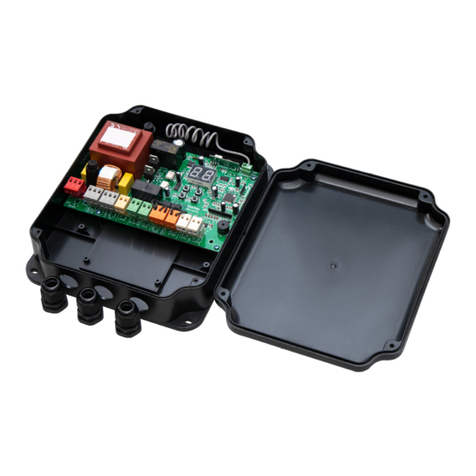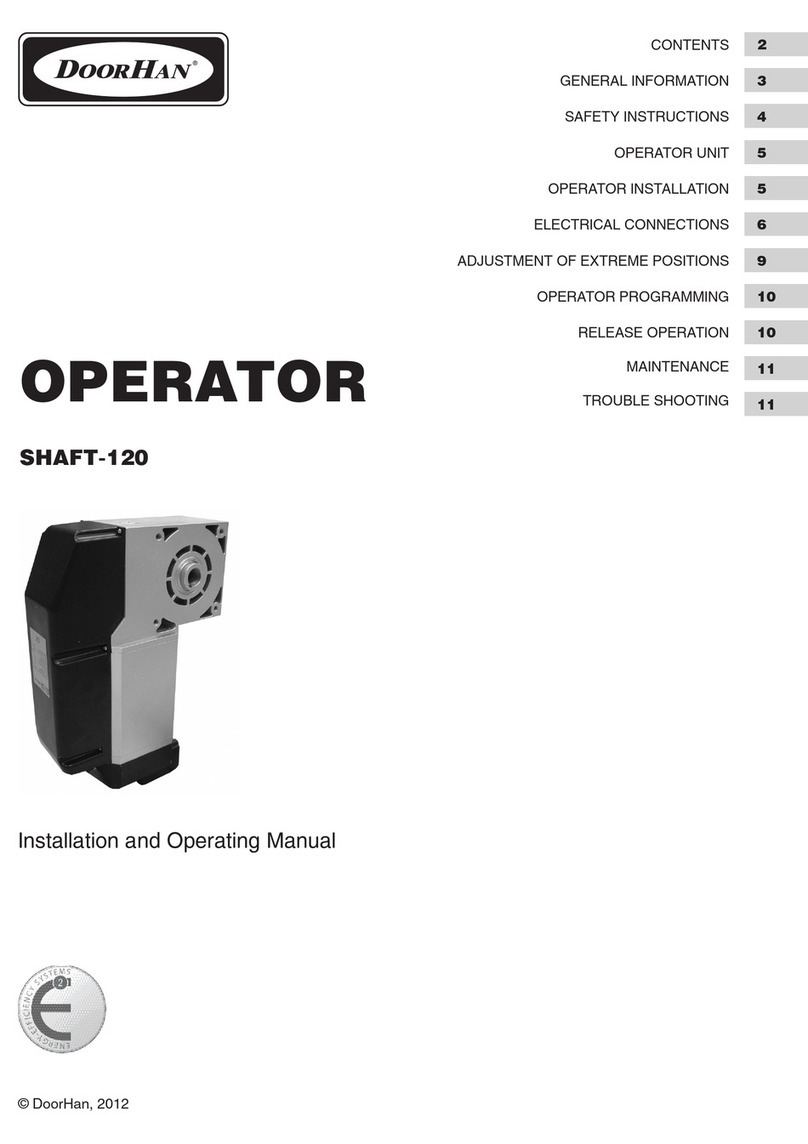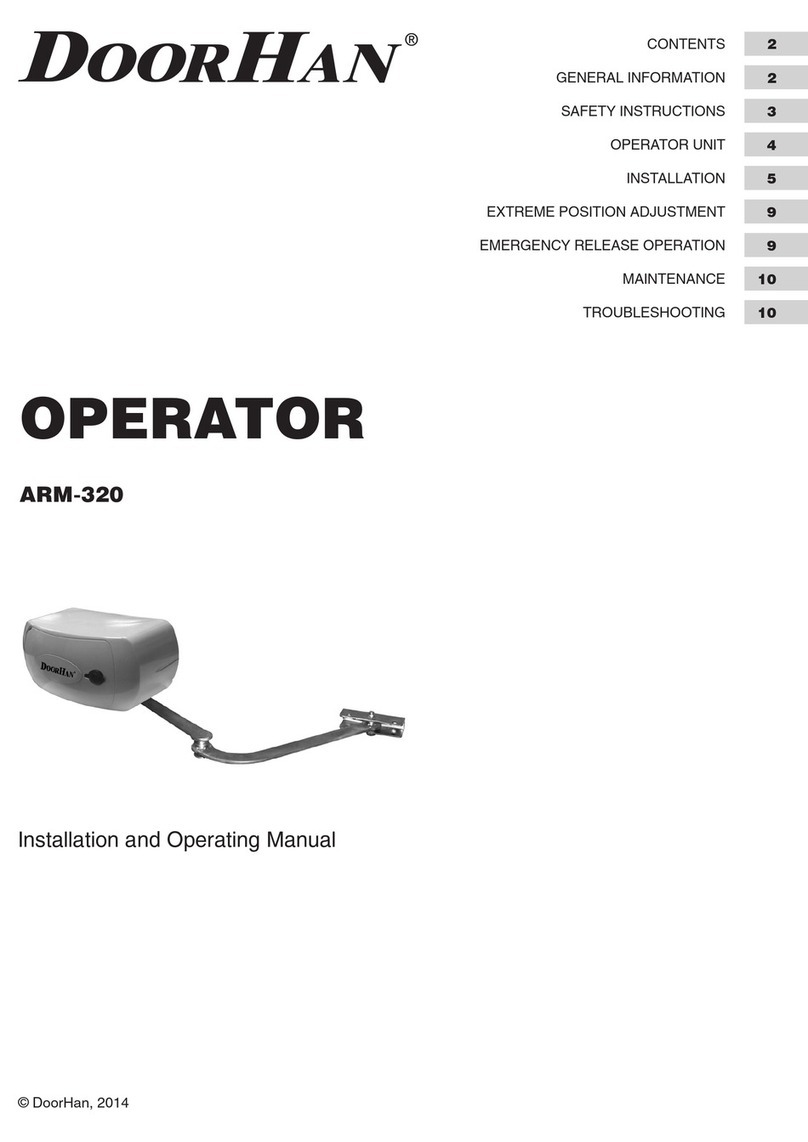
SAFETY RULES
3. SAFETY RULES
3.1. SAFETY RULES WHEN WORKING AT HEIGHT
Work at height is work in any place located at height of
1,3 m from the ground level and carried out from ladders,
scaffolds, platforms and other devices. The state of health
of the personnel working at height shall meet the medical
requirements established for these works.
When working at height always use a safety belt. If it’s
impossible to secure the belt to a building structure than
use a safety rope instead. In such a case two installers
should carry out all the works. Never use safety belts with
metal chain slings while working around energized wiring
and equipment!
Tools and fittings should be properly secured to prevent
their falling while working above energized electrical in-
stallations. To pass tools and fittings upwards an installer
standing on the ground should hold a rope with tied in-
struments to prevent its swinging and approaching to en-
ergized electrical installations.
3.2. SAFETY RULES WHEN WORKING FROM LADDERS AND STEPLADDERS
Straight ladders and stepladders should be properly se-
cured to prevent their lateral movement and overturn. Sta-
bilize the base of the ladder using sharp-tipped feet for
the ground surface and anti-slip safety shoes for smooth
surfaces like metal, tile or concrete.
IT IS PROHIBITED TO:
work from the rung located less than one meter from the ladder top;
use power tools when working from a ladder;
work from the two top rungs of a stepladder which has no safety hand rails or ladder stop;
be on the steps of a ladders or stepladder for more than one person;
stand under the ladder which is used for work;
leave tools or materials on top of any ladder.
3.3. SAFETY RULES WHEN OPERATING POWER TOOLS
Only qualified and specially trained personnel acquainted
with electrical safety instructions can operate power tools.
It is recommended to use power tools operating at volt-
age not exceeding 380/220 V. Choose power tool taking
into consideration electric shock hazard of the premise.
Ground metal housing of electric tool operating at voltages
above 42 V AC and above 110 V DC when working in haz-
ardous areas and outdoor installations. Tool connection
plug should have a ground contact. Plug power tools only
in the grounded power supply network. When using exten-
sion cords make sure they have grounded plugs and sock-
ets. Always wear protective rubber gloves or rubber bot-
tom shoes or sneakers when using electric instruments.
Protective devices must be tested in accordance with the
procedure established by law.
Prior to operation:
ensure all the components are in place and properly
secured;
check for worn out cable (wire), its protective tube and
plug; damaged insulating parts of the housing, handle
and brush holder covers; absent or damaged protective
casings;
make sure ground circuit between the housing and the
ground contact of the plug is whole;
ensure the main switch works properly;
check operation of power tools at idle.
Use only properly functioning, checked and sealed tools.
Never bend or twist electric cables or position any trailing
wires where different structures and materials are stored
or vehicles move. When working in rainy weather (snow-
fall) protect with canopies the area where cables are laid
or power tools are used.
IT IS PROHIBITED TO:
hold the instrument by its cord;
remove chips or sawdust from the cutting tool and replace the cutting tool until it stops completely. Use corre-
sponding instruments to fasten the replaceable tool;
plug the power tool in a circuit with characteristics which do not correspond to the specified in data sheet;
move an electric tool with operating motor from one working place to another;
leave unattended a plugged-in or operating electric instrument;
leave electric instrument unattended to prevent its unauthorized use.
































